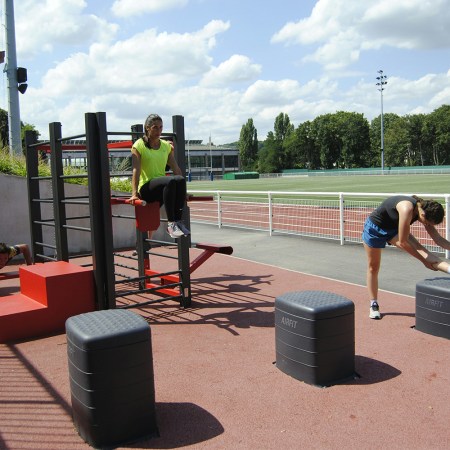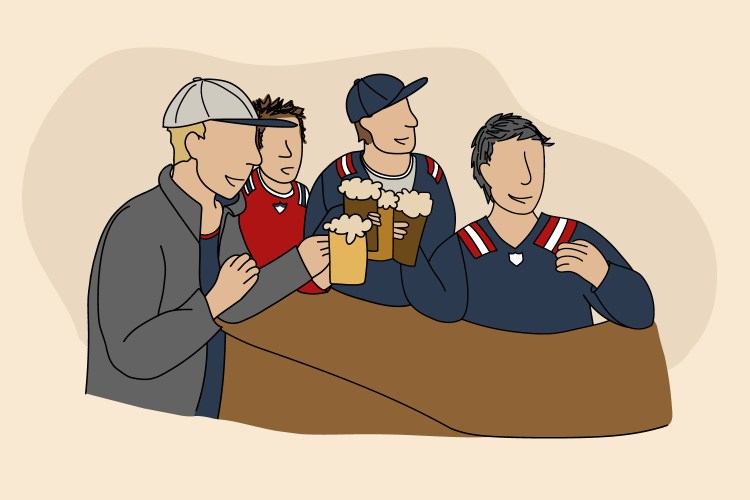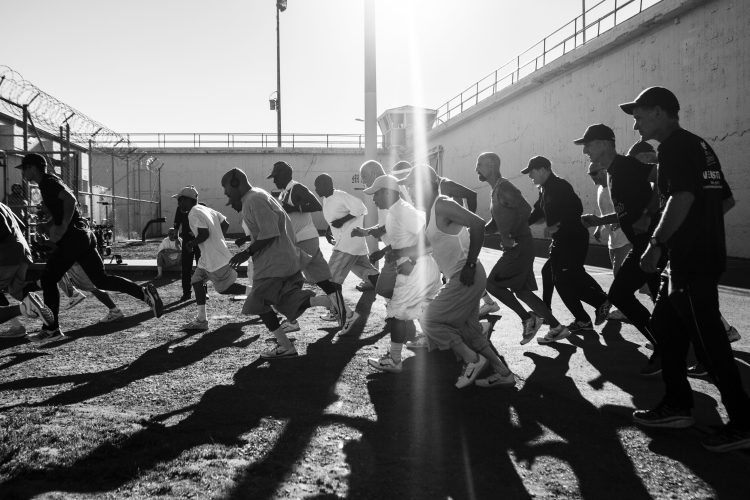Fitness magazines are awash with tales of Hollywood actors undergoing extreme physical transformations in a matter of months — and promises that with a little discipline, you, too, can do the same.
Take Chris Pratt’s evolution from dad bod to dreamboat. Or Christian Bale’s six-month, 110-pound weight gain for Batman Begins.
And while no one wants to wait months to start seeing enviable results, there is real danger in replicating the die-hard techniques used by men whose jobs it is to look good on camera. They often rely on a team of trainers and doctors, for starters, and also have time the average man simply can’t afford.
So to save us all the trouble of incurring serious in the quest for bigger, better muscles, we got in touch with Canadian Crossfitter Lucas Parker, whose full-time job is to look swole. Below, Parker reviews some common methods that men use to try to cut corners in the gym, how they can hurt you in the long run, and whether a safer alternative exists.
Image via Nexus
Don’t: The Dehydration Method
Bodybuilders often employ rapid dehydration to increase muscle definition ahead of competition. It involves consuming around four times the recommended amount of water daily in the first half of the week before cutting off water completely and then expelling it in anyway possible, usually via salt baths and sauna. “Dehydration may be a necessary tool if you are a movie star with millions on the line, or an athlete in a weight-class sport like Olympic weightlifting or wrestling,” says Parker. “However, these individuals typically have education and guidance regarding these protocols.”
Do: Intermittent Fasting
The word fasting carries a particular stigma, but the intermittent version refers to an eating pattern whereby one alternates between periods of eating and fasting. It’s been proven to better break down body fat and reduce the amount of muscle burned versus regular calorie-restriciton dieting. Most practicers only eat between noon and 8 P.M., meaning no breakfast and an early dinner (don’t worry, coffee is still A-OK at breakfast time). But if you go this route, it’s vital to monitor how you fuel your body in this limited window. Parker suggests eliminating sugars and replacing them with carbs from yams and rice to “improve body composition while still maintaining energy.”
Don’t: Ice Baths
“Athletes intend to use ice baths for recovery — but exposure to ice-cold water typically spikes the adrenaline and other physiological indicators related to the sympathetic nervous system, aka your ‘fight or flight’ mode,” says Parker. “This is arguably the opposite of what most people would describe as ‘recovery.’ Adding more stress to your system might not be what you really want.” While it’s true that ice baths can more quickly heal torn muscle fibers than, say, an icepad on the knee, one should slowly work up to this method, starting with cold showers and making sure supervision is on hand before taking a full-blown plunge.
Do: Regulate Your Sleep
Unless you’re a professional athlete pushing your body to its physical limits every day, you don’t need an intense, immediate recovery to prepare to do it all over again tomorrow. One alternative Lucas enjoys is to set a bedtime alarm, ensuring “you develop the habits needed for longer, deeper sleep and growth-hormone release.” A regular sleep schedule will give your body enough time to naturally repair and rebuild itself after workouts.
Don’t: The Valsalva Maneuver
If there’s one thing my high-school gym coach screamed at me every day, it was to breathe. The Valsalva Maneuver calls for the opposite. “Breath holding and hyperventilating exercises have been increasing in popularity [recently],” according to Parker. “These practices can play around with your O2/CO2 balance, having an effect on your blood chemistry and brain.” It can create what’s known as the Valsalva Effect, spiking your blood pressure before rapidly dropping it. Other than putting you at a high risk of passing out, breath-holding increases your blood pressure and actually works against you, decreasing the amount you can lift.
Do: Yoga
If you want to take longer, deeper breaths while working out without seriously upping your risk for a stroke, try something a little more time-tested: yoga. Think of the Valsalva Maneuver as breaking down the door to hit your max, while steady breathing and a stable core are opening that same door with a key.
Do and Don’t: Stimulants
It’s ok to take pre-workouts, but make sure you aren’t using them as a means to run on fumes by the time you make it to the gym. Naturally, the other dos in this list should help you achieve this: regulated sleep, a mindful diet and less mental and physical stress. Per Parker, “Using caffeine and other stimulants to increase your metabolism to burn fat or train harder can be effective — but it can also create dependency, and an inability to train or perform when you don’t have the substance available. I find it often masks problems in other areas of someone’s lifestyle or health: if you’re using stimulants to bypass poor sleep, nutrition or mindfulness practices, then you’re probably headed towards a big crash in the near future.”
The Takeaway?
All methods can help or harm you, depending on how they’re practiced. Parker prefers hacking his workouts through bio- and mechano-feedback, and uses a wearable tool called NEXUS to monitor and optimize his workout. It tracks pace and intensity in order to prevent injury, ensuring no large variations in output and relaying ideal rest-to-work ratios depending on your physique and goals.
Main image via Ben Glass/2011 Warner Bros. Entertainment Inc
Whether you’re looking to get into shape, or just get out of a funk, The Charge has got you covered. Sign up for our new wellness newsletter today.






















